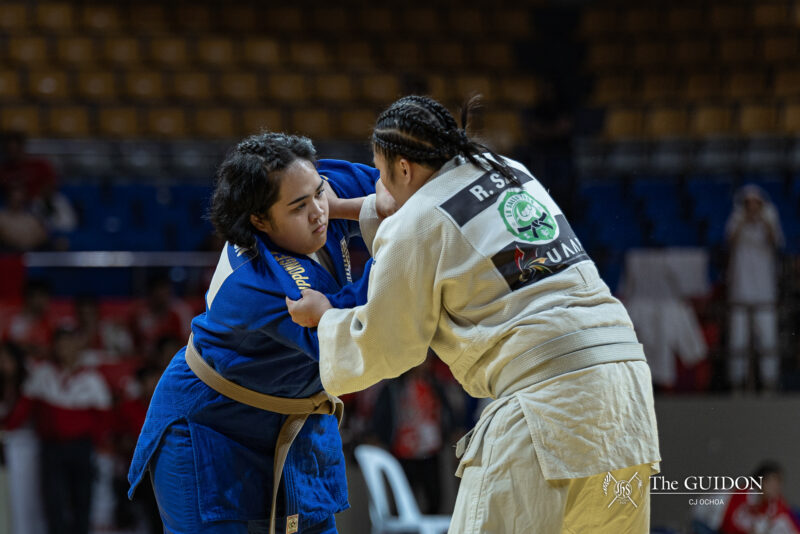Two teenagers are latched onto a car as it cruises up a road in the quiet La Vista subdivision. As the car crests the top of the hill, they let out a whoop and let go.
The car disappears behind them, too slow to keep up with the riders now rolling down on their boards. Bodies tucked in, hands out to steady themselves, the two riders pick up speed.
They pull up as the bottom of the hill approaches and cruise along the flat road at an easy speed. One of them takes off his helmet and mops off the sweat on his brow.
“That’s longboarding, man,” he yells.
From the shores to the streets
In the 1950’s, longboarding was born on the streets of California, in a place one would not expect. The earthbound, pavement-skidding board began in the waves.
“Longboarding is actually a derivative of surfing,” says Gerard Cancio, an avid longboarder and a skater since his grade school days. “When the waves weren’t there, people wanted alternatives. That’s how longboarding was born.”
The sport, however, took a longer time to arrive on Philippine shores (and sidewalks). “It was two to three years ago when longboarding really came here, with a brand called Sector 9 selling boards at malls,” adds Gerard.
Now, he says, it’s the fastest growing board sport in the world. Due to media exposure and the hype of the new sport, the Philippines has become longboarding’s biggest landing point in Asia.
Versatility on wheels
Of course, no sport survives on hype alone—it has to offer something to its enthusiasts. “What I really like about longboarding is the ride,” says Martin Lozano, a prominent figure in the Ateneo longboarding scene. “It’s smoother, and [it is] generally more fun to cruise around on it.”
Martin’s love affair with longboarding began at the beach, where he enjoys skimboarding, another boardsport that involves cruising on the backwash left by waves on the shore. “I wanted something similar that I could do outside my house, without going to the beach,” he says.
Unlike skateboarding, where flips and grinds take the spotlight, longboarding, in Martin’s words, is “more of an expression.”
“As long as you can push, you can longboard,” he says. “It can be anything you want it to be.”
For Gerard, it’s about the experience of downhill racing. Clichéd feelings aside—“It’s just you and your board, the sensation of speed, the wind in your face”—he says longboarding’s extreme aspect hits him in the right spot. “You’re barreling down a hill at 100 kph,” says Gerard, shaking his head and smiling at the memory. “I love that thrill.”
Junior Alec Rivera picked up a love for longboarding not by zooming down a hill, but by watching videos on the Internet. YouTube is full of videos of longboarders performing all sorts of slides and tricks, moving around the board in different and often artistic ways.
“I really got into it because I wanted to learn those tricks,” says Alec. “It’s like dancing.”
Colonial mentality
The trend took permanent root in the country thanks to Whiskey Hill, one of the first groups of longboarders to bring the sport to the Philippines. “They held events and races, and people really got into it,” says Gerard.
Whiskey Hill’s Facebook and Multiply accounts make the sport accessible even in cyberspace, and reach people here and abroad. “People are actually very active online,” adds Gerard. “There are sites you can go to to meet other longboarders.”
Connor Schmitt, a longboarder from New York, has been coming to the Philippines to skate and has seen it progress over the last five years of his stay. “When I first came here a few years ago, it was a very exclusive scene. I was virtually alone as a longboarder,” he says. “Now, however, I skate almost every day with a lot of different people.”
As a skater who has experienced participating in both sanctioned and underground races in the States, Connor says the passion for the sport may be one of the factors that allow the few but successful longboarding events here in the Philippines. “It’s really hard to close the streets over in the States,” he says. “Whereas over here, it’s really easy to get even a major road closed for a race.”
To Connor, Filipino skaters are one of the few commendable people who share a love for the sport. He says, “It’s been a pleasure to skate with such a stoke-filled group of people.”
Riding into the sunset
Longboarding, however, has its share of naysayers, especially when it comes to the stigma attached to the misnomer ‘free-riding.’
“There’s this image of longboarding and skateboarding as being related to vandalism and stuff,” says Gerard. “[Having the image of] running away from the cops and all that.”
This is why people like Gerard and Martin are working on changing this perception. “We’re trying to advocate safety above all else,” says Gerard. “We’re trying to be responsible. Through this, we hope that the perception will change eventually.”
Martin, on the other hand, is in the process of working to set up an organization for longboarders at the Ateneo. “I know it won’t really be official,” he says. “I just want to set up a network and meet other likeminded people. Maybe organize some free rides and sessions, and just enjoy.”
For these skaters, these events and gatherings with fellow longboarders is just the first step. With many people spreading the stoke, it won’t be long before the trend catches on to the big waves.
Top tricks
Despite their lack of flashy flips and grinds, longboarders also have their own brand of stylish tricks up their sleeves. Longboarder Alec Rivera teaches us a few moves.
Cross Step
This is the basic trick that beginners learn first. The rider steps his front foot over his back foot, before quickly hopping back to his normal stance, all while rolling along.
Chop the Wood
The rider takes a small hop into the air and lands on one leg. The other leg juts out to the side, suspended in the air.
Nose Manual
The rider lifts his back foot, putting all his weight on the front of the board. He rolls along, the board’s rear wheels jutting out into the air behind him.






